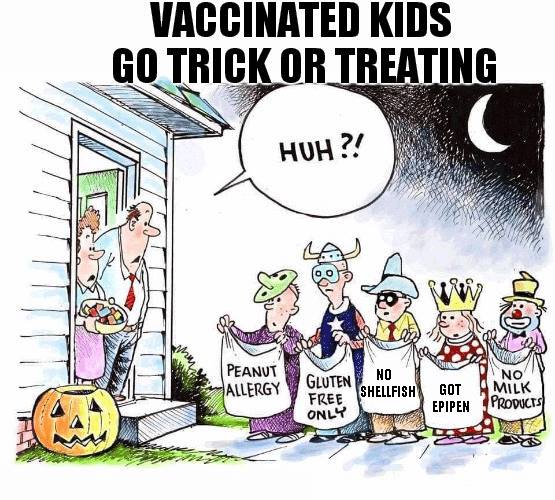Single lots of vaccinations are spread out over a wide geographical area which prevents the doctors and public from connecting the cause of illness to a specific batch of vaccine
Wythe Memo - August 27, 1979
"After the reporting of the SID cases in Tennessee, we discussed the merits of limiting distribution of a large number of vials from a single lot to a single state, county or city health department and obtained agreement from the senior management staff to proceed with such a plan."
...except there is an analogy here that goes way beyond the memo. Barbara
Loe Fisher and Harris Coulter lay it all out in "A Shot in the Dark,"
subtitled "Why the P in the DPT vaccination may be hazardous to your child's
health." Barbara is regularly portrayed in the media as an anti-vaccine
zealot, but the book's discussion of what happened in Tennessee is pretty
convincing. (And she was instrumental in getting a safer version of the
vaccine onto the market.) From the book:
"When statistics are applied to the study of vaccines, political immunology
demonstrates its infinite flexibility: statistical evidence demonstrating
cause and effect is denied, when this same evidence, applied to any other
branch of medicine, would be accepted without question," Coulter and Fisher
write.
"This convenient method of reasoning was displayed with particular clarity
in connection with the government's investigation of SIDS deaths in
Tennessee. In 1978-79, eleven babies were found to have died within eight
days of a DPT vaccination. Nine of the eleven
had been vaccinated with the same lot of pertussis vaccine, Wyeth #64201 and
five (four from the same lot) had died within twenty-four hours of
vaccination.
"A statistical analysis of the clustering of deaths revealed that the
likelihood of observing four or more deaths occurring randomly on any of the
first eight days after the use of lot #64201 was 3 in 100. ...
E.B. Mortimer later reported that the
probability of this being a chance association was even lower -- between 2
and 5 in 1,000.
"The statistical evidence in favor of a connection between the deaths and the DPT shot was strong. Would the medical authorities bite the bullet and admit the vaccine was related to the deaths? Absolutely not."
It's a long and unpleasant tale, but when all was said and done, "the tombstone was placed on what happened in Tennessee three years later, in the September 1982 issue of the Journal of Pediatrics, when Bernier and his colleagues at the CDC wrote their epitaph on the infant deaths. ... They ... made this amazing statement: 'Whether or not this temporal association reflects a causal relationship remains undetermined; we found no evidence to support such a causal association.'"
Fisher and Coulter mention the Wyeth memo, saying the company "apparently also decided to act to prevent a clustering of deaths following DPT vaccination from a single lot from ever occurring again in a single geographical area." They don't reproduce the actual memo; as far as I know, this is the first time it has been published. (And no, neither Fisher nor Coulter was my source.)
It packs quite a wallop, doesn't it? Since these are described as
"Interim Measures In Affect" (sic!), and include a "Permanent Policy
Proposal" to put into effect (sick!), wouldn't it be interesting to know how
they distribute lots these days? Is this the kind of approach that Rosalynn
Carter and Amanda Peet (I'll leave Paul Offit out of this) want to be hooked
up with? Might they consider asking their benefactors for an explanation,
since as far as I know none has been forthcoming although the memo's
existence has been known for a couple of decades, at the least? Do the drug
companies, the HMOs, the AAP and the CDC really have a track record of
tracking down every report of side effects, encouraging the public to make
use of the VAERS system and vigilantly monitoring the VSD database? Are they
the ones we want to trust to tell us whether there is any "causal
association" between vaccines and SIDS, or autism, or asthma, or ADD?
I vote no. I also can't help pointing out that A Shot in the Dark was first
published in 1985, just before the modern Age of Autism began. Too bad no
one in a position to do anything about it took seriously the deep and
disturbing implications of this incident -- and the continuing power of
"political epidemiology" to bury its mistakes in unmarked graves.
--
Dan Olmsted is Editor of Age of Autism.
http://www.ageofautism.com/2008/08/by-dan-olmsted.html

